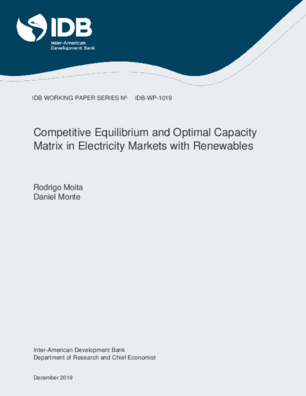Competitive Equilibrium and Optimal Capacity Matrix in Electricity Markets with Renewables
Date
Dec 2019
This paper develops a dynamic model of competitive equilibrium in electricity markets with thermal, hydro and intermittent power sources. Thermal generators have positive and increasing costs and use a marketable input. Hydro generators use a free and uncertain input, but one that is storable. Intermittent renewable generators (solar or wind) use a free, uncertain and non-storable input. The competitive equilibrium is characterized, and it is proven to be Pareto optimal for any given technology mix. It is then proved that the optimal capacity matrix exists, is unique and, under reasonable cost assumptions, involves the three technologies. Moreover, the efficient allocation involves using thermal generation in every period. We calibrate our model with data from three countries with very different capacity matrices and diverse natural characteristics, namely, Argentina, Brazil, and Uruguay. For each country we obtain: i) the unrestricted optimal capacity matrix; and ii) the second best matrix, or the optimal investment in capacity given the current matrix. Finally, the numerical results show that when there is an increase in the share of intermittent sources, the profitability of the thermal and hydro increase after some point, following a U-shape relationship, which suggests that the entry of renewable generators does not compromise the system's reliability.




